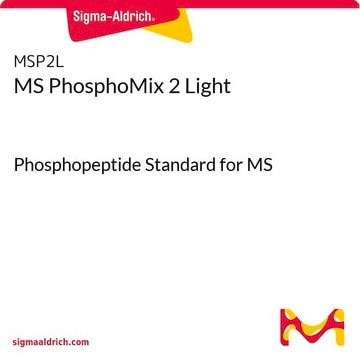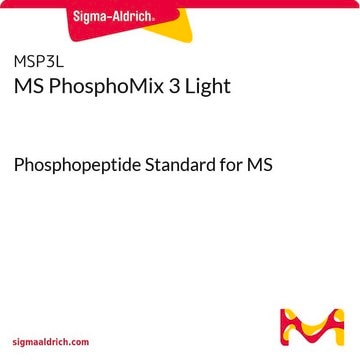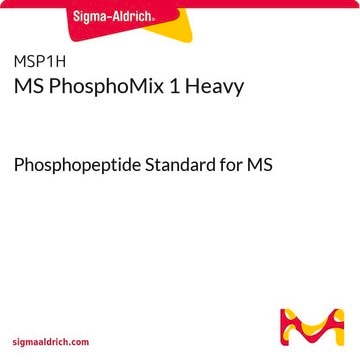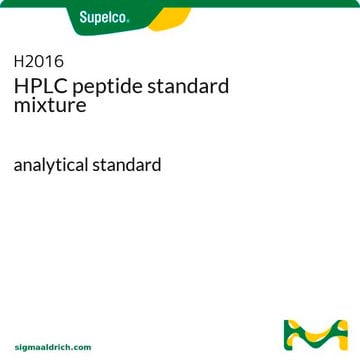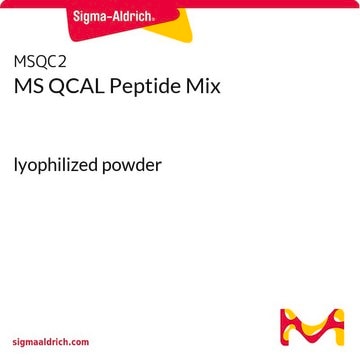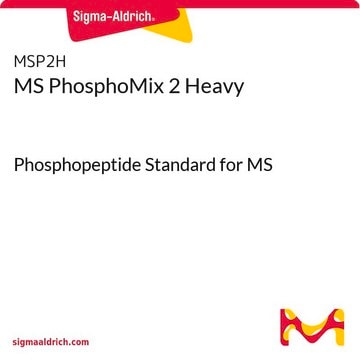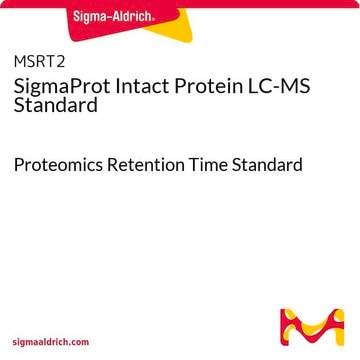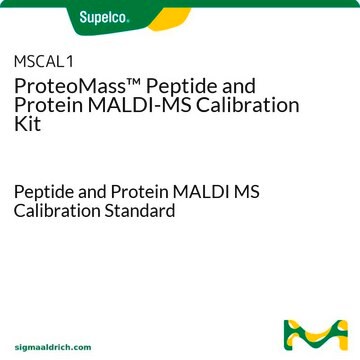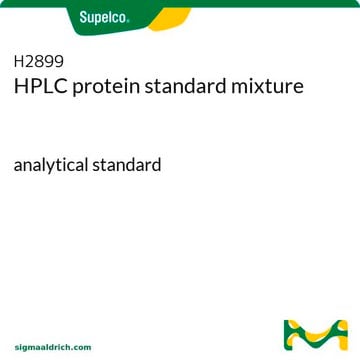MSP1L
MS PhosphoMix 1 Light
Phosphopeptide Standard for MS
Sinónimos:
Light PhosphoMix, PhosphoMix 1 Light
About This Item
Productos recomendados
quality
Phosphopeptide Standard for MS
Quality Level
analyte chemical class(es)
amino acids, peptides, proteins
packaging
pkg of 200 pmol total phosphopeptides
technique(s)
HPLC: suitable
LC/MS: suitable
application(s)
food and beverages
format
multi-component solution
storage temp.
−20°C
General description
Each of the three phosphopeptides mixes are available in their naturally occurring isotopic abundances (light) or as stable isotope enriched versions (heavy), making the set of products highly amenable to quantitative analyses, allowing users to compare recovery between workflows or techniques.
- Naturally occurring peptide sequences
- Broad range of peptide characteristics
- Complementary product designs
- Available in light and heavy versions
More info and FASTA file
related product
Storage Class
11 - Combustible Solids
wgk_germany
WGK 3
flash_point_f
Not applicable
flash_point_c
Not applicable
Certificados de análisis (COA)
Busque Certificados de análisis (COA) introduciendo el número de lote del producto. Los números de lote se encuentran en la etiqueta del producto después de las palabras «Lot» o «Batch»
¿Ya tiene este producto?
Encuentre la documentación para los productos que ha comprado recientemente en la Biblioteca de documentos.
Los clientes también vieron
Nuestro equipo de científicos tiene experiencia en todas las áreas de investigación: Ciencias de la vida, Ciencia de los materiales, Síntesis química, Cromatografía, Analítica y muchas otras.
Póngase en contacto con el Servicio técnico